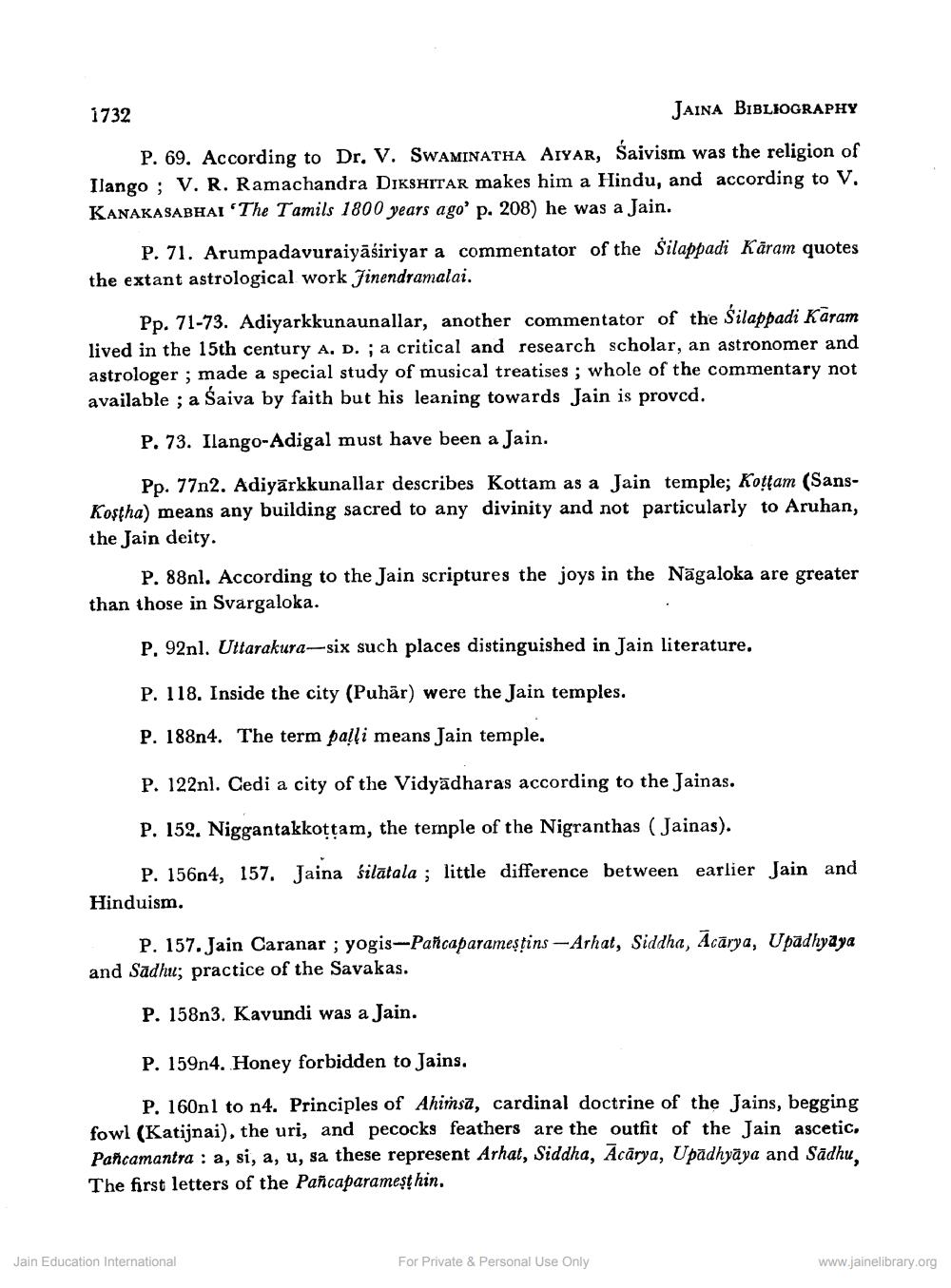________________
1732
JAINA BIBLIOGRAPHY
P. 69. According to Dr. V. SWAMINATHA AIYAR, Saivism was the religion of Ilango; V. R. Ramachandra DIKSHITAR makes him a Hindu, and according to V. KANAKASABHAI 'The Tamils 1800 years ago' p. 208) he was a Jain.
P. 71. Arumpadavuraiyāśiriyar a commentator of the Silappadi Kāram quotes the extant astrological work finendramalai.
Pp. 71-73. Adiyarkkunaunallar, another commentator of the Silappadi Karam lived in the 15th century A, D.; a critical and research scholar, an astronomer and astrologer ; made a special study of musical treatises; whole of the commentary not available ; a Saiva by faith but his leaning towards Jain is provcd.
P. 73. Ilango-Adigal must have been a Jain.
Pp. 77n2. Adiyārkkunallar describes Kottam as a Jain temple; Koufam (SansKostha) means any building sacred to any divinity and not particularly to Aruhan, the Jain deity.
P. 88nl. According to the Jain scriptures the joys in the Nāgaloka are greater than those in Svargaloka.
P. 92nl. Uttarakura---six such places distinguished in Jain literature.
P. 118. Inside the city (Puhär) were the Jain temples.
P. 188n4. The term palți means Jain temple.
P. 122nl. Cedi a city of the Vidyadharas according to the Jainas.
P. 152. Niggantakkottam, the temple of the Nigranthas (Jainas).
P. 156n4, 157, Jaina silātala ; little difference between earlier Jain and Hinduism.
P. 157. Jain Caranar ; yogis-Pañcaparamesțins ---Arhat, Siddha, Ācārya, Upadhyāya and Sadhu; practice of the Savakas.
P. 158n3. Kavundi was a Jain.
P. 159n4. Honey forbidden to Jains.
P. 160nl to n4. Principles of Ahimsa, cardinal doctrine of the Jains, begging fowl (Katijnai), the uri, and pecocks feathers are the outfit of the Jain ascetic. Pancamantra : a, si, a, u, sa these represent Arhat, Siddha, Acārya, Upadhyāya and Sadhu. The first letters of the Pañcaparameșthin.
Jain Education International
For Private & Personal Use Only
www.jainelibrary.org




